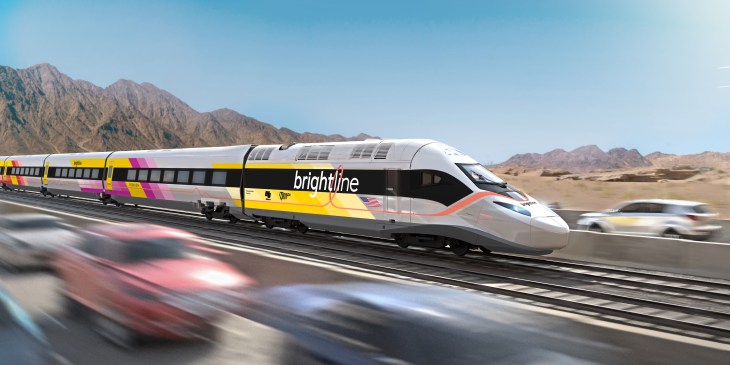
In 2013, Elon Musk published a white paper that teased the idea of zipping from Los Angeles to San Francisco in just 35 minutes through a vacuum-sealed tube — a system he called hyperloop. The idea “originated out of his hatred for California’s proposed high-speed rail system,” according to his biographer Ashlee Vance.
Ten years later, the most high-profile startup that tried to follow in Musk’s footsteps — Hyperloop One — is closing its doors. And the news of its demise broke less than two weeks after the Biden administration announced $6 billion in funding for high-speed rail projects across California.
It’s a big win for public transit advocates, many of whom have spent decades stumping for not just high-speed rail, but better rail service overall. (Biden’s announcement also included funding for a slew of other rail projects around the country.) But it’s not a clean victory by any means.
For one thing, many cities and states were lulled by the hyperloop siren song and were subsequently left adrift. I still vividly remember reporting out a story in 2018 about the collapse of Arrivo (another hyperloop startup created by one of Hyperloop One’s co-founders) and calling Colorado’s Department of Transportation to ask about the company going under, only to realize on the call they had no idea it had happened.
Colorado was not alone. Hyperloop One once promised West Virginia that it would build a $500 million test and certification facility in the state. It also built a test track near Las Vegas where it did, briefly, move some people through a tube — enough of an accomplishment, apparently, for then-CEO Jay Walder to claim it was the “first new form of mass transportation in over 100 years.”
Other hyperloop projects and companies remain, though largely outside of the United States. Thankfully this country was already building momentum back up for investing in its rail system, with a focus on faster trains.
The most high-profile effort is Brightline, a company that recently extended its existing service in Florida all the way to Orlando, allowing passengers to travel there from as far as Miami.
Brightline is also building what it calls “the nation’s first true high-speed rail network” between Los Angeles and Las Vegas. That project received $3 billion of the funding recently announced by the Biden administration, and is expected to break ground in early 2024.
Building high-speed rail will take more than just money. There are deeply rooted problems standing in the way stemming from years of deregulation. Projects of this size also struggle to stay on time and on budget. The other big recipient of the newly announced federal funding — another $3 billion — is a high-speed rail project slated to run the spine of California that was the original source of Musk’s ire.
Could high-speed rail’s revival run the risk of a rematch with the world’s richest man? Perhaps, though train fans can take solace in how distracted Musk has become since that 2013 white paper.
Besides, outside of a handful of engineering contests held by SpaceX, Musk only ever entertained his own hyperloop projects at a superficial level.
Musk once tweeted that he had “verbal govt approval” to build “an underground NY-Phil-Balt-DC Hyperloop.” It was never built. In April 2022 he claimed his tunneling effort The Boring Company would “attempt to build a working hyperloop.” The following day the company tweeted “Hyperloop testing at full-scale begins later this year.” That also never happened.
Musk spent the last decade barely engaging with the hyperloop, essentially outsourcing his attempt to kill high-speed rail. With Hyperloop One’s death casting a pall on that premise, it looks increasingly like the billionaire has a decision to make: Does he care enough to find the time to finish the job himself?
techcrunch.com




